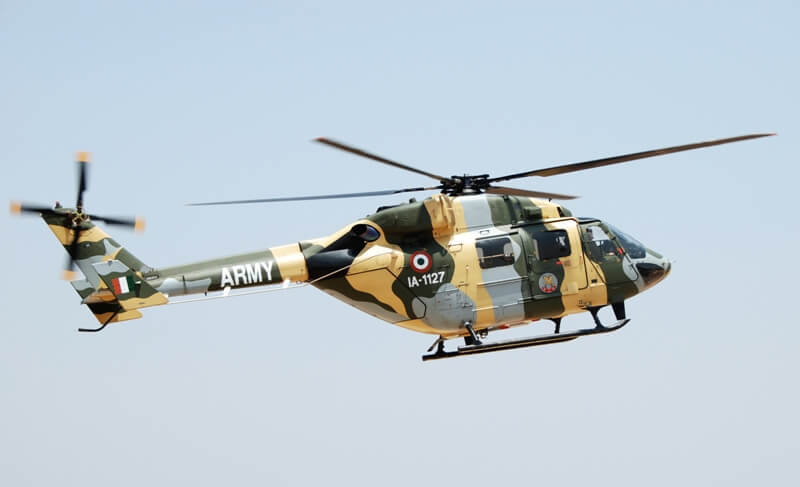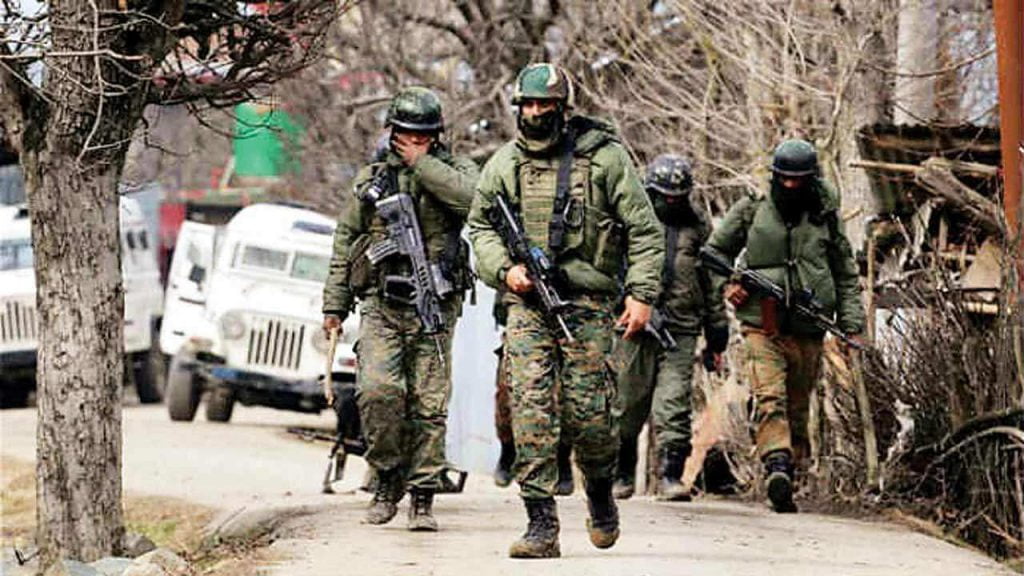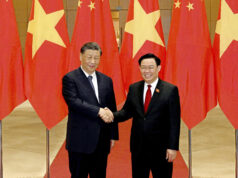The inside story: Mashkoh– Kargil as I saw it # 11
By
Brig Umesh Singh Bawa Vrc, SM

On 05 Jun, my brigade commander called me and briefed me on the impending task of sending a long-range patrol for a week with a mission to cut off the enemy supply lines from the rear, behind Tiger Hill a mountain in the Drass-Kargil area. Probably, he had been tasked by the GOC, and without discussing the task with me, he agreed to take it on.

The task involved positioning ourselves between the enemy defences to cut off his supply routes. It was a challenging proposition to sustain even if we were able to infiltrate behind the enemy defences. Before us, two other units had tried the task but failed. But the brigade commander believed that what others could not do, the Jats could do! When this task was given to my battalion, my initial reaction was “hell no”! It isn’t worth the risk. The mission required specialised skills in cliff climbing, which my troops were not trained in. I didn’t believe that this mission made sense. The terrain was very challenging.

I didn’t think it would be successful. I thought it would be suicidal to go behind the enemy lines and interposing in between his defensive positions, without a further plan to support this force administratively. What if the party can get behind, but our maintenance columns are not able to sustain them due to enemy interference? I knew my mindset carried great weight among my troops. So, I kept the doubts troubling my mind to myself as I asked a simple question: why? If I expressed doubts or question the wisdom of a task given to me in front of my troops, their disdain towards the assigned mission would increase exponentially. They would never commit to it and it would fail. But these were the orders from my superior, so I had to act on it. I had detailed Maj Deepak with D company for this task. The brigade commander took Maj Deepak for an aerial recce on a helicopter to show him the area where the patrol was to establish itself to cut off the enemy supply lines.

Long range patrol
Accordingly, on 08 Jun, a long-range patrol under Major Deepak Rampal, comprising of three JCOs and 60 men was tasked to explore the feasibility of occupying a height in depth to cut the enemy’s maintenance route which lay along the ridgeline in the Drass-Kargil area. Special mountaineering equipment and a team of instructors from High Altitude Warfare School (HAWs) were also attached to the patrol. The patrol explored four routes through the glaciated terrain and tried to interpose themselves. But due to the impossible nature of the terrain, the patrol was compelled to abandon the attempt and return to the unit on 16 Jun.

To convince and inspire others to follow and accomplish a mission, a leader must stay focused on the mission success. If a leader does not believe in success, he will not take the risk required to overcome the inevitable challenges necessary to accomplish the task nor will he be able to convince the troops taking part in the operations. Since I did not believe in the success of the mission, the same mindset trickled down the chain of command resulting in an unsuccessful mission. It was also imperative on the part of the brigade commander to have discussed the task in hand with the commanding officer, before he committed himself to GOC 8 Mountain Division, to take on the task, where two battalions had already failed in the mission. It is not wise to keep trying the same mission despite of repeated failure by other units.
GOC 8 Mountain Division was in dire need of some success after assuming command of his new area of responsibility on 01 Jun. His priority objective for capture was Tololing and Point 5140, as these objectives were deep inside our territory and were interdicting NH 1D very effectively. It was indeed a surprise that 16 Grenadiers which was responsible for the defence of this area could not pick up any movement of the enemy at Tololing or its neighbourhood features. It is a clear example of professional dishonesty in not carrying out the surveillance of this area during the preceding months. Equally responsible are the commander 121 (I) Brigade and GOC 3 Infantry Division for not having checks and balances to ensure that the tasks are carried out professionally.
Earlier attacks on Tololing by 1 Naga and 18 Grenadiers had been unsuccessful. The GOC had now tasked commanding officer of 2 Raj Rifles, Col Ravindran for the capture of Tololing and commanding officer 18 Garhwal Rifles, Col Chatterjee for the capture of Point 5140. The D day for the attack was 12 Jun 99.
Turning point – capture of Tololing
In the first week of Jun, 2 Raj Rif was tasked to capture Point 4590 at Tololing. 18 Grenadiers was in contact with the enemy on Tololing for almost two weeks and provided valuable information of its dispositions. It was appreciated that the feature was held by approximately 30-40 persons, having overwhelming firepower of 6-8 automatic weapons including MMGs and UMGs. The enemy was also well supported by artillery fire.
The final plan of attack of 56 Mountain Brigade was 2 Raj RIF to attack Point 4590 along the south-east spur, and south-west spur and 18 Garhwal was to attack Point 5140 along with eastern and north-eastern spurs. The attack on Point 5140 was opposed by commander 56 Mountain Brigade and commanding officer 18 Garhwal Rifles as they were apprehensive of the success due to rugged terrain. However, GOC insisted on the simultaneous attack, as probably he appreciated that by doing so the enemy might not be able to reinforce Tololing and in case this attack succeeds it will cut off the enemy’s route of withdrawal and maintenance. To support this attack 16 fire units of artillery were made available, including Bofors battery in direct firing role. 18 Grenadiers less two companies were to act as reserves to 2 Raj Rif.
The outline plan of 2 Raj Rif was to employ two companies each along the southwest spur and southeast spur. Since CO 2 Raj Rif wanted adequate artillery support, he requested a firm base of 18 Grenadiers, which was near the objective to be pulled out. This request was accepted after great deliberation. The H hour was 2000 hours 12 Jun 99. Enemy engaged attacking columns with artillery and automatic fire. However, the whole objective was captured by 2 Raj Rif by 0600 hours 13 Jun 99. It was the first significant success of Operation Vijay. In this action 2, Raj Rif lost Maj Vivek Gupta, 2 JCOs and seven other ranks. At the same time, 26 persons were wounded. 2 Raj Rif captured Tololing top under the dynamic leadership of Col Ravindran, CO 2 Raj Rif due to the sheer grit and determination of his officers and the troops.

The news of the capture of Tololing spread like wildfire. This victory on Tololing was the first big success in the Kargil operation, and it acted like a morale booster for every unit deployed there, especially the companies employed in offensive operations. The capture of Tololing was considered as a turning point because Tololing represented the most profound intrusion by the Pakistani Army, which was so close to the NH1D. Also, it served as a source of inspiration to other battalions which were to launch further operations subsequently. It was also the first victory of the 8 Mountain Division in the Kargil Ops. When this news spread in my unit, it was a significant relief to everyone and instilled the sense of confidence that if 2 Raj Rif can do it, so can we and the task of capturing the objective was feasible if we are determined to achieve it. It proved the adage, ‘no defences are impregnable for a determined attacker.
Attack by 18 Garhwal Rifles on Point 5140 on night 12/13 Jun and 13/14 Jun did not succeed. Despite having a good CO who was bold, aggressive, highly decorated and courageous, the unit made no headway due to some of the officers lacking the drive to achieve the task. Also, the commanding officer himself was not sure of the mission success due to rugged terrain and approach to the objective. If the commanding officer shows reservation in the success of the mission, then the same attitude trickles down to the subordinate commanders and thence to the troops, who would not give their 100% to the mission. Despite the CO and commander having reservations about the success of the mission from the northern direction, the GOC insisted that the assault be launched from the same direction. The result was the failure of the mission. I think the GOC should have heeded the advice of the commanding officer and the brigade commander of not tasking the unit for an assault from the north-eastern and north-western direction.
If you don’t understand certain decisions coming from your senior leadership, then you must ask questions till all your doubts are clear. If you don’t ask questions, then you are failing as a leader, and you are failing your men. It is likewise incumbent on senior leaders to take time to explain and answer the questions of their junior leaders. Your boss may not always agree with you. But at the end of the day, once the debate is over and the boss has decided, you must execute the plan as it was your own. When dealing with your boss, it is essential to use caution and respect, or else you could risk your career. One of the most important jobs of a leader is to support your immediate superior leader. In any chain of command, the leadership must always present a united front to the troops. A public display of discontentment or disagreement with your boss undermines the authority of leaders at all levels.
To know more about the Kargil war, read the book “Mashkoh: Kargil as I saw it”.



